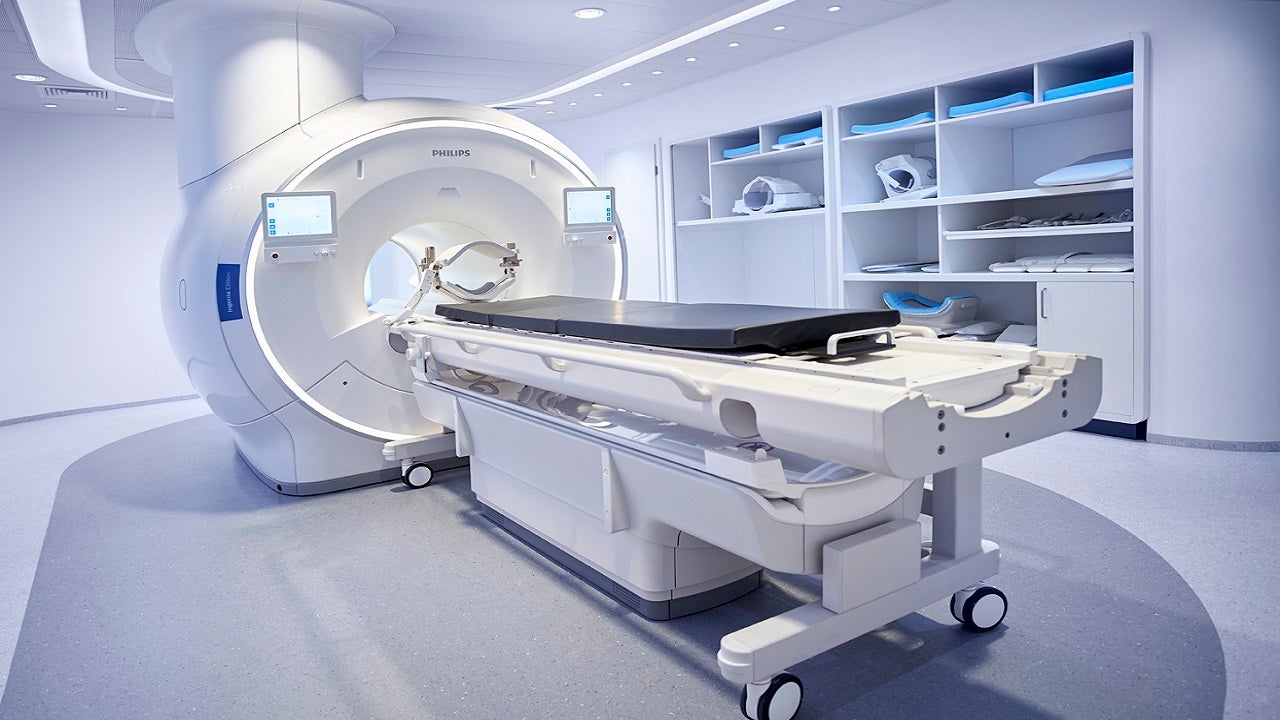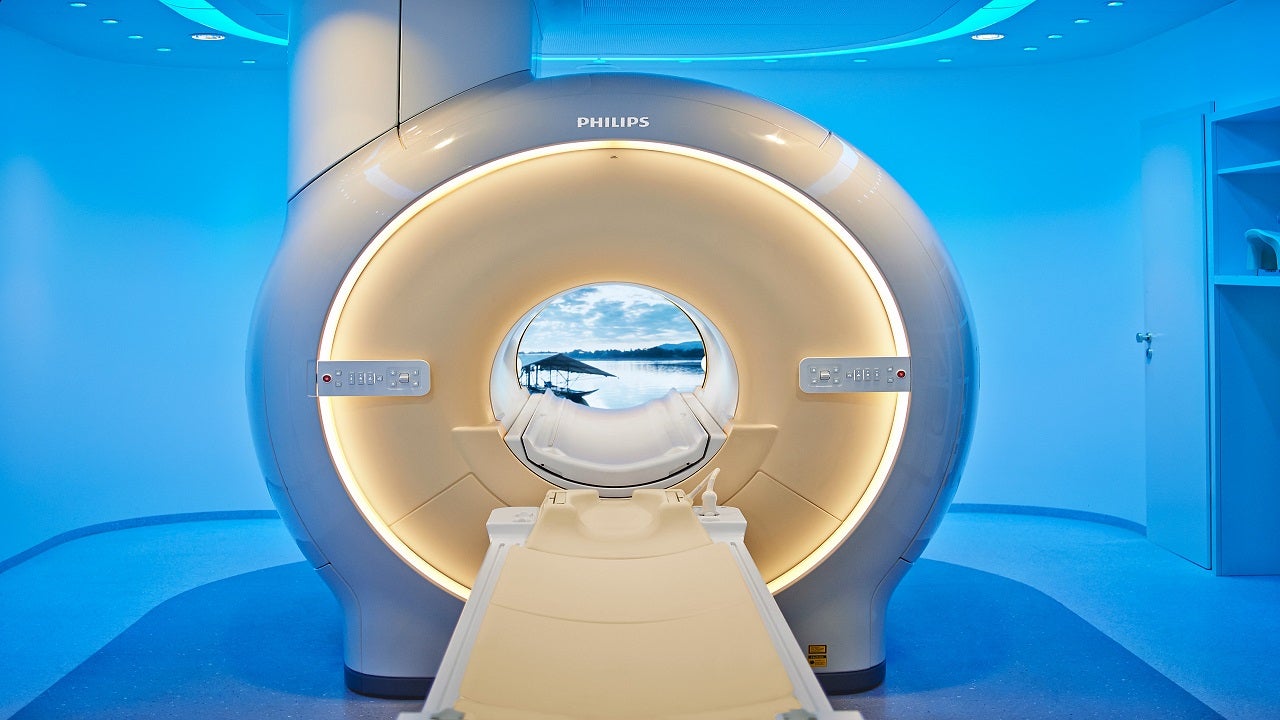The Ingenia MR-OR is a 1.5T or 3.0T intraoperative magnetic resonance (MR) system designed and developed by Netherlands-based Royal Philips for high-quality diagnostic and interventional imaging during neurosurgical procedures.
The system acquires up-to-date, detailed information at any time during a surgical procedure and tumour resection in order to facilitate confident real-time intraoperative decisions and updated neuronavigation.
In April 2021, Royal Philips installed the first Ingenia MR-OR intraoperative system in the new state-of-the-art Central Acute Services Building at Westmead Hospital in Sydney, Australia. The facility was fast-tracked under the New South Wales government’s coronavirus (Covid-19) response plan.
Philips’ Ingenia MR-OR intraoperative magnetic resonance system features
The Ingenia MR-OR system features a 70cm-wide bore with a homogenous field-of-view of up to 55cm, enabling versatile and easy patient positioning. The dStreamdigital broadband technology allows the system to deliver high-resolution images for visualising tumour margins and critical structures.
The dStream digital architecture and scanning protocols, based on ds SENSE, have high acceleration factors for quick imaging and small acquisition windows. This streamlines the examination process and reduces the time for which patients are exposed to MR scans.
The system facilitates the performance of interventions in three work spots, namely the operating room (OR), the front of the magnet and the back of the magnet. This supports MR-guided brain biopsies and functional neurosurgery techniques, such as deep brain stimulators placement, and multiple procedures.
Patient transition between OR and scanning room
The Ingenia MR-OR system allows patients to be transitioned seamlessly between the OR and the scanning room, allowing smooth patient handling and reduced procedure times.
The patient transfer solution combines a Transmobil Patient Transporter and FlexTrak OR interface. It allows rapid, in-line transfer from the operating table to the MR scanner.
The FlexTrak OR patient transfer system stays on the MR side of the gate throughout the entire intraoperative process without crossing the sterile threshold into the OR. This assists in the generation of high-geometric accuracy images for updating neuronavigation and countering the cause of brain shift.
The dual-room MR-OR solution keeps the OR set-up intact while separating the MR magnet room and the operating suite via sliding doors. This avoids any interference with standard surgical instruments and devices.
OR set-up flexibility
The Ingenia MR-OR scanner is compatible with both Maquet Otesus and Magnus universal tables, allowing users to operate in their preferred OR configurations.
Two MR-compatible head clamp solutions are used for fixating patients. The NORAS head holder incorporates an eight-channel coil for high-quality intraoperative MR imaging, even in challenging patient positions. The DORO® Headrest System is an open frame that integrates adjustable radio frequency (RF) coils to provide high accessibility and versatility.
Benefits of Philips’ Ingenia MR-OR intraoperative magnetic resonance system
A well-planned intraoperative MR solution can increase cost-effectiveness and implement efficient neurosurgical workflows while adding value to the organisation.
The MRI system’s configuration options enable high utilisation and accurate MR imaging data almost at every point during surgery. The ability to use the Ingenia MR-OR during surgery, routine diagnosis and follow-up scanning also ensure the cost-effective usage of resources.
The 70cm-wide bore allows for quick positioning of patients in prone, supine or lateral positions for surgical precision.
Philips’ Ingenia MR-OR applications
The MR-OR system is primarily used for brain tumour treatment, where it assists neurosurgeons in removing as much tumour as possible during surgery.
The Ingenia MR-OR supports and promotes clinical excellence across a wide range of advanced neurosurgical applications. It expands the standard T1 weighted (T1W)/T2 weighted (T2W) anatomical imaging by incorporating functional magnetic resonance imaging (fMRI), diffusion-weighted imaging (DWI) and diffusion tensor imaging (DTI).









